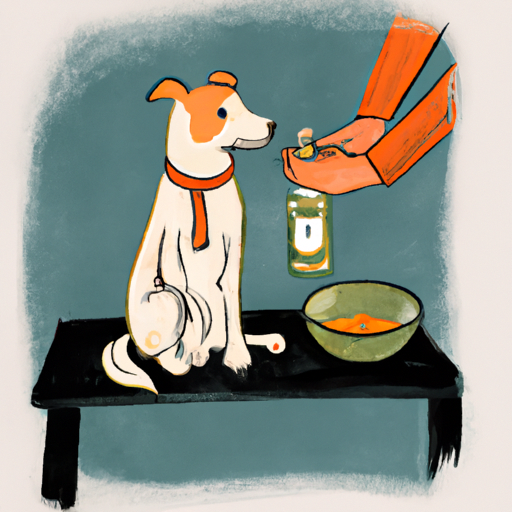In this guide, we’ll explore how you, the dedicated caregiver, can use olive oil to promote the health and well-being of your beloved canine companion. We’ll be using descriptive language and various literary devices to paint a vivid picture of each step in the process.
Why Olive Oil?
Olive oil is a natural, affordable, and readily available remedy that can work wonders on your dog’s skin. It’s a rich source of monounsaturated fats, which can help to moisturize the skin, promote a shiny coat, and even support your dog’s overall health.
Preparing the Oil
You don’t need any fancy equipment to prepare olive oil for your dog’s skin. Here’s what you need to do:
- Choose a high-quality olive oil. Extra virgin olive oil is the best choice.
- Pour a small amount of oil into a bowl. You don’t need much – a tablespoon or two should suffice for most dogs.
- Warm the oil slightly. You can do this by placing the bowl in a larger bowl of hot water. Be sure to test the temperature before applying it to your dog’s skin.
Applying the Oil
Now, for the main event – applying the oil to your dog’s skin. This might seem daunting, but it’s actually quite simple.
- Start by dipping your fingers into the oil.
- Gently massage the oil into your dog’s skin, using circular motions.
- Make sure to cover all areas, paying particular attention to dry or irritated patches.
Watching for Results
After applying the oil, it’s time to sit back and watch for results. You should notice an improvement in your dog’s skin and coat within a few weeks. Keep an eye out for the following:
- A shinier, healthier-looking coat
- Less itching and scratching
- Reduction in dry, flaky skin
Cleaning up Afterward
Olive oil can leave a residue, so you’ll want to clean up afterward. Here’s a simple process to follow:
- Wipe off any excess oil with a towel.
- Bathe your dog using a gentle, dog-friendly shampoo.
- Dry your dog thoroughly to prevent any oil from seeping onto your furniture or flooring.
Frequently Asked Questions
Q: How often should I apply olive oil to my dog’s skin?
A: Once or twice a week should be sufficient for most dogs.
Q: Can I use other types of oil on my dog’s skin?
A: Yes, but always check with your vet first. Some oils may not be suitable for all dogs.
Q: My dog doesn’t like having oil applied. What should I do?
A: Try to make the process as calm and enjoyable as possible. You could also consider adding olive oil to your dog’s food as an alternative.
Q: Can I use olive oil on my puppy?
A: Yes, but always check with your vet first as puppies may have different needs than adult dogs.
In conclusion, olive oil can be a great natural remedy for your dog’s skin issues. By following these steps, you can help your furry friend look and feel their best.



